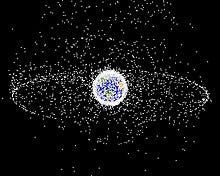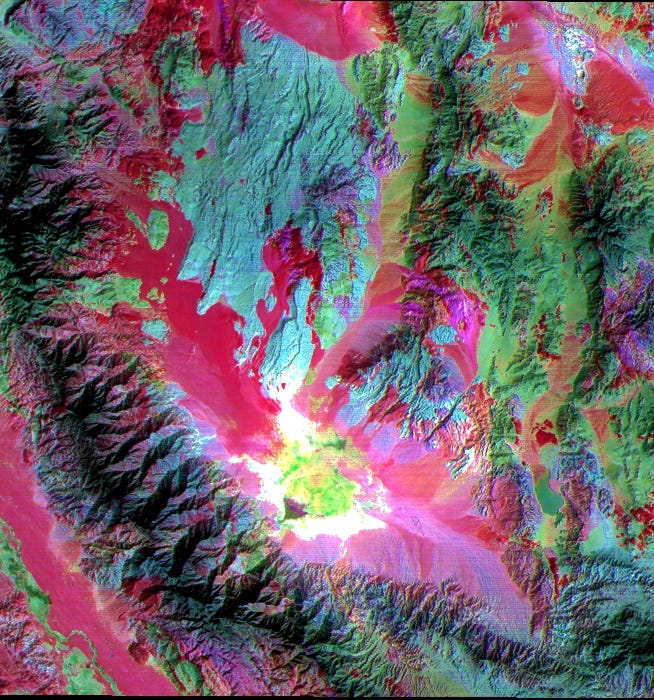Space is cold, empty, and full of potential. Staggering amounts of energy and resources float in an extremely hostile environment. Against this backdrop, it can be difficult to balance optimism about the high frontier with the sheer intractability of exploring it.
Does it really make sense to go to Mars? Is exploring space even worth it?
The case for space may not be settled, but let’s make one thing clear: the value of industry in orbit will be enormous. Establishing a presence in cis-lunar space opens up new possibilities for Earth, from communications to ecosystem management.
Falling launch price-per-kg is the main enabler of the cis-lunar space industry. As launch providers scale, costs will continue to fall. Emerging approaches such as rotating detonation engines, Spin Launch and the Skylon project may accelerate this trend, while orbital fuel production and space manufacturing promise to lower the mass required for a given project.
What does the cis-lunar space look like when access becomes cheap?
Communications
The most straightforward application of satellites is for terrestrial communications: phone calls, internet access, credit card transactions, you name it. Satellite internet is particularly important, since it provides access to developing nations and rural areas. The impact would be huge.
10 billion people paying $10/month for ubiquitous, fast space internet is already a trillion dollar industry. I expect satellite communications to take a big chunk of the $2.5 trillion telecommunications industry.
The funny thing is, we can put our internet in space without sacrificing speed. Starlink satellites orbit roughly 400 miles overhead, and the signal travels 50% faster through space than via optical cables.
For example, Hibernia Express spent $300 million dollars to build a fiber optic cable connecting New York and London stock exchanges. This cable offered only 5 milliseconds lower latency than a competing fiber optic cable. But Real Engineering estimates that Starlink satellites can do this 12 milliseconds faster than even the best fiber optic cable on Earth.
That kind of speed opens up a lot of new applications. For one, why not run all stock exchanges through satellites? Or even better, run the exchange on the satellite. This would connect far more people to a market with lower latency. Markets in commodities or predictions would also benefit1.
Video games are another application. Because play happens in real time, you usually need to play with people that are geographically close to you. Far more people can share the same server when it’s flying overhead. Lower latency might also open up new game mechanics that weren’t possible before.
Cryptography
Satellites will be a boon for terrestrial communications. Even better, satellites can be used to make those communications more secure.
Orbit is a great place to put hardware you want to keep secure. Satellites are difficult to reach and easy to observe, making it prohibitively difficult for attackers to gain physical access.
Satellites are also a natural platform for many types of cryptography. One cryptographic scheme uses satellites as a source of randomness. These satellites could potentially gather correlated randomness from quasars or the Cosmic Microwave Background. The long optical links available in space make a satellite network a natural platform for certified random numbers.
Perhaps more exciting, satellites have been used for quantum cryptography; their line-of-sight access to many users simplifies quantum cryptography schemes. These links might be useful for creating long distance entanglement between distant points on earth, which is valuable for quantum computation. In fact, since space is cold and isolated from the gravitational and electronic noise on earth, it might actually be a good place to build quantum computers.
Since satellites are separated by long distances, it opens up some more exotic possibilities. Relativistic cryptography leverages the fact that no information can travel faster than the speed of light to guarantee certain properties. This is not a hypothetical possibility, there was a recent (ground-based) demonstration of this technology23.
Eyes in the sky
Orbital telescopes have long been used to look at the stars, but with the ability to put more mass into space, these telescopes can get more sophisticated. Large arrays of telescopes can create unprecedented images of the cosmos. Building telescopes on the moon may extend our vision even further.
But we already have pretty images of the stars, what happens when we turn our telescopes towards the earth? Governments have been using satellites for espionage and domestic surveillance for decades and the proliferation of launches will only increase their use. Expect more satellite monitoring and the privacy concerns that come with it.
These imaging capabilities could change the face of nuclear war. For example, observation of enemy missile silos can give countries an early warning of a nuclear attack. Recent research suggests that satellite imagery can make it very difficult for states to hide nuclear programs, which should aid the enforcement of international treaties. These will help reduce the risk of nuclear war, a constant threat.
There are also many civilian uses of satellite imagery. More telescopes can offer an unprecedented level of data about the Earth. For example, Casey Handmer points out that the Starlink constellation already has the capability to provide a wealth of data about the Earth:
With sufficiently accurate position, navigation and timing (PNT) data from GPS satellites, Starlink satellites could perform fully 3D synthetic aperture radar (SAR) of the Earth’s surface, with enough bandwidth to downlink this treasure trove of data. Precise ocean height measurements. Precise land height measurements. Surface reflectivity. Crop health and hydration. Seismology and accumulation of strain across faults. City surveying. Traffic measurements in real time. Aircraft tracking for air traffic control. Wildlife study. Ocean surface wind measurements. Search and rescue.
Adding to this list, detailed weather monitoring could provide data about our atmosphere and enable better weather predictions. Pollution monitoring can help fight climate change by identifying methane leaks and sniffing out polluters. Satellite lidar can be used to image terrain, find ancient cities, analyze the atmosphere, and monitor ecosystem health.
Going further, scanning Earth’s surface can help us find critical minerals. NASA’s ASTER mission uses ground imaging in many different wavelengths to help find mineral deposits. Satellite imagery could also be used to identify clusters of metal-loving plants, which can indicate the presence of metal deposits. Gravitational, magnetic, and gamma-ray surveys of earth’s surface may also help find key resources4.
Conclusion
A larger presence in orbit has several follow-on benefits.
For one, less reliance on terrestrial infrastructure will increase our robustness to disasters. Regardless of what happens on the ground, our communication and observation systems will stay intact.
Robust communications will change geopolitics. With free access to the marketplace of ideas, will propaganda lose its power? Or will states find a way to keep their citizens from seeing the sky?
I hope I live to see a night sky filled with artificial stars. Growing our presence in orbit will revolutionize the way we communicate with each other and provide new view of our atmosphere, terrain, and ecosystem. A healthy industry in orbit will give us a platform to climb towards the Moon, Mars and beyond.
Appendix: Other revenue sources in space
Space tourism and entertainment. Who’s going to be the first space influencer?
Space art, advertising, and burials
Speculative investment in space mining and exploration by corporations, governments, and civilian groups.
Building a Moon base. Both the U.S. and China have plans to land humans on the moon by 2030. Establishing manufacturing on the moon could make it much easier to build and repair satellites, eliminating the need to launch material from Earth’s surface. If space tethers are used, it may actually make sense to mine the moon to some degree (for lithium, lithium-6, helium-3 and precious metals) since tethers need a falling counterweight to provide rotational inertia. Falling moon rocks can also provide an enormous amount of gravitational energy.
Placing shades in orbit or heating parts of Earth’s atmosphere might give us control over local weather conditions.
Lagrange points might be a good place to conduct dangerous experiments such as nuclear research, pathogen research, and high-energy particle physics.
Space weapons
Missile defense
Travel and shipping: rockets can take you anywhere on Earth in under an hour, just saying. EDIT: see my post Rocketplanes and the company Outpost space, which aims to use orbital depots for fast delivery.
GPS for everything. Find lost items, track inventory, guide robots, etc.
More speculatively, can satellites offer cryptographic proof of someone’s location? This has applications for location-based authentication, criminal law, e-commerce, and integrating sensor data (see also: FOAM Maps).
EDIT: Reflect orbital is trying to use orbiting mirrors to increase the productivity of solar farms.
Satellite communications can even benefit ordinary transactions. Bank transfers and credit transactions can run with lower latency less infrastructure. Blockchains and cryptocurrency markets would benefit for similar reasons.
Combine that with quantum communication and you get the even more exotic relativistic quantum communication.
Another use for satellites and space stations is interactive prover systems. Since it’s hard to communicate through the Earth, the light-speed delay might allow for using the no-signalling principle for interactive provers and relativistic cryptography. However, this seems mostly like an academic interest.
Could we look even deeper? Subatomic particles such as neutrinos and muons can pass through massive amounts of rock. Neutrino detection is difficult, but perhaps a satellite generated muon beam could glance through the earth’s surface and be observed by a second satellite, producing deep subsurface images.






